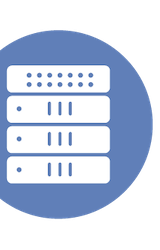In this post, Ray Lucchesi considers the conundrum of backing up a petabyte, something that conventional IT would say isn’t feasible. This would require scanning the numerous file systems within that PB, daily scanning the hundred of TB changes, then transferring all of that to the backup storage. Instead, organizations rely on costly replication to protect against outages. At Cloud Field Day, Ray heard how Igenous is doing this scale of backup today, using a unique engine to scan and index PB scale data repositories, while still providing admins visibility into what is backed up. Be sure to check out Ray’s post and Igneous’ entire presentation on our YouTube channel.
What Is the Future for Storage Admins?
Storage has changed rapidly over the past decade, and the role of the storage admin has changed along with it. Gina Rosenthal considers what the future of the storage admin looks like in this piece, based on what she saw at Storage Field Day. It says a lot about the state of storage that many companies traditionally thought of as storage providers are now presenting at the event. She looks at NetApp’s approach with the Cloud Volumes Service, on-premises scale-out systems from Dell Technologies’ PowerScale solution, Igneous’ data management platform built on a scale-out file system, and Qumulo’s file data platform. Even as storage changes and goes to the cloud, Gina thinks the skills that storage admins have built up are more needed than ever.
CFD8 – Igneous Followup
Nate Avery previously previewed what to expect from Igneous’ Cloud Field Day presentation, looking back at a 2016 Tech Field Day presentation to see how their messaging has changed since coming out of stealth. After hearing the company present at the event, he looks at their DataProtect solution, which enables enterprises to backup on-premises file data to a given cloud service provider. This hits all the major notes a solution like this requires, with a novel indexing scheme, full and incremental backups, tiering, and compression. He found everything they showed to be fast and fluid, but he thinks they are better positioned as a hybrid cloud backup provider, focused on one-way movement of data from on-prem to the cloud.
CFD8 Preview – Igneous Systems
There were a lot of familiar names to Nate Avery in the list of presenters at Cloud Field Day. But Igneous was not one of them. He looked at their previous Tech Field Day presentation from 2016, and saw a company newly out of stealth showing off an interesting infrastructure-as-a-service offering. Looking at the company ahead of their presentation in 2020, he sees an exciting pivot with the company. Today they are less concerned with deploying boxes to an organization, and more being able to get metadata from files everywhere in the environment. We can’t wait to hear Nate’s takeaways from the presentation.
Preparing for Cloud Field Day 8
Lino Telera attended his fourth Field Day event during the virtual Cloud Field Day. In this post, he gives a preview of what he expected to see from each of the presenters. He was particularly interested to learn about Terraform Cloud from HashiCorp, and the application abstraction layer Spektra from Diamanti. Be sure to check out all his thoughts on the presenters before diving into the videos for yourself. We have an extensive archive of Field Day videos, stretching back years across all our events. It’s an invaluable resource for keeping up to date with the latest in IT.
Cloud Field Day 8 Prep – Daily Check-In for June 17, 2020
In this Daily Check-In video from Ned Bellavance, he digs into his homework ahead of seeing presentations at Cloud Field Day. He introduces his audience to the whole Field Day experience, and runs down the presenters to talk about what he expects to see. If you haven’t been checking out Ned’s daily check-in videos, be sure to subscribe to his channel for more!
Is Everything Pay-as-You-Go?
Eric Shanks reviews the solution he saw from Igneous Systems. He’s intrigued by what they are offering on a technical level. Overall, he considers if what they are offering is so much pay-as-you-go, or if they simply offering forward looking provisioning. Regardless, it’s well worth the read for Eric’s thoughts.
Drive and Rack Scale Storage Architectures
Big data storage problems getting you down? Never fear! James Green put together a video highlighting two companies from last month’s Tech Field Day that are presenting solutions. Igneous offers an array of nanoservers equipped drives, making each network addressable. James also highlights DriveScale’s take on managing big data with their rack adapter to address a pool of JPOD storage. It’s a really great comparison between the two approaches!
Cloud Storage? In my DC? Yes please! Enter Igneous
John White reviews what he saw from Igneous Systems at Tech Field Day last month. Overall, while cloud storage in your datacenter isn’t necessarily groundbreaking, he likes the approach that Igneous is taking. He particularly calls out the RatioPerfect Architecture, which puts compute on each drive. This eliminates a lot of I/O bottlenecks. John found the price competitive, especially compared to AWS. Add in the latency benefits on on-site storage, and Igneous has a compelling solution.
The Igneous Synthesis
Igneous Systems proposes to offer a storage appliance that will allow you to get the benefits of Infrastructure as a Service while keep all your storage local. Rich Stroffolino gave their Tech Field Day presentation was impressed with how the company was able to synthesize the two aspects. As he points out, this often isn’t an easy task, but Igneous gives you robust local protection in their all in one storage device, while giving you cloud-centric fleet management of the entire device network across all customers.
Scale-Out. Distributed. Whatever the Name, it’s the Future of Computing
Alex Galbraith was inspired to write about the wonders of synthesis. The combining of established ideas to create something new drives a lot of innovation, and what Alex saw from Igneous Systems is a prime example. Their prime innovation, taking the abundance of horizontally scaling compute power, and putting a processor on each drive. This effectively reverses the typical storage scenario of have a small number of large fault domains. With Igneous, the fault domain is exactly one drive, making each failure negligible.
Igneous – On Premises, Cloud Managed, Scale-Out Storage
Ethan Banks gives an overview of what Igneous Systems presented at Tech Field Day this month. It’s an interesting solution, while acknowledging the plethora of open source options for developing a storage array out there, the Igneous team walked the delegates through why they developed their own data path and hardware architecture. Ethan digs into how the company deals with drive failure, their secret he dubs “the wide Igneous stripe” , a 20+8 layout scheme.
On-prem Cloud Storage with Igneous Systems
On-prem cloud storage? Sounds like a contradiction in terms. But much like jumbo shrimp, Igneous Systems makes it work. They presented at this months Tech Field Day, and Matt Crape was intrigued by what he saw. Igneous is offering an end-to-end solution with their storage array. Matt liked how Igneous rethought their solution from ground zero. Effectively, previous storage arrays are dependent on a few SAS cards, which provides a big bottleneck if and when those cards go down. Igneous calls their architecture RatioPerfect, they effectively put an ARM interposer on each drive, taking the fault domain from a slew of drives to just one. Matt still has some questions about practical implementations of their solution, but on an architectural level, it’s clear Igneous did their homework.
Scaling storage with an army of ARM!
Mike Preston really seemed impressed by Igneous’ storage solution presented at Tech Field Day. They offer a really interesting solution to storage. Instead of have multiple drives beholden to a single powerful Xeon CPU, Igneous proposes their RatioPerfect system, one CPU for each drive! They do this with an Ethernet equipped ARM board attached to each drive, what Igneous calls “nanoservers”. These are then put together in a JBOD within a 4U rack. On top of that, Igneous proposes their solution as end-to-end, the customer hooks it up to the network and Igneous takes care of the rest of the management. Give the rest of the piece a look, Matt gets into a lot of detail about their management plane, which he thinks might be the key to future success.
Tech Field Day 12 Primer: Igneous Systems
Matt Crape is a first-time Tech Field Day delegate but he’s jumping in with a series of blog posts about the presenters. Here’s his take on Igneous Systems, which seems to be getting a lot of delegate interest! Matt details their dataBox storage device, which can leverage local storage for cloud-native apps to provide improved speeds for users, as well as mitigating privacy and security concerns.
Igneous bringing the cloud to you at Tech Field Day
Mike Preston continues his investigation into Tech Field Day presenters with a look at Igneous.IO, a “true cloud for local data”. The Igneous solution is like nothing we’ve seen before – a hardware cloud system deployed inside a data center but with pay-as-you-go pricing. Best of all, they install and manage the system throughout its lifetime. It’s compatible with Amazon and Google API’s, so it should work with existing applications. It sounds like Mike and the Field Day delegates are very interested in learning more!
Startup Radar: Igneous Systems Blends On-Prem Hyperconvergence With Cloud Management
Startup Radar: Igneous Systems Blends On-Prem Hyperconvergence With Cloud Management








